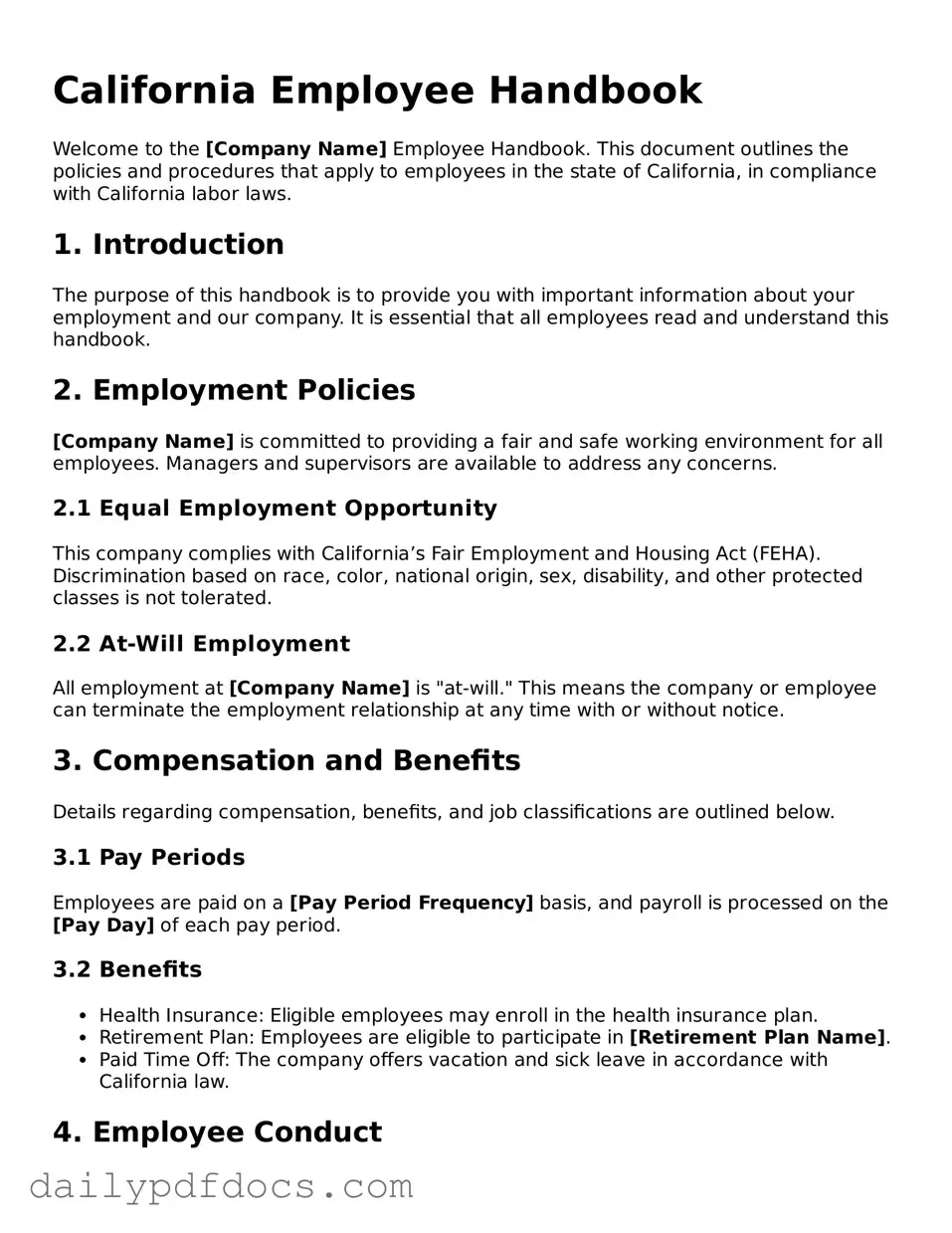California Employee Handbook
Welcome to the [Company Name] Employee Handbook. This document outlines the policies and procedures that apply to employees in the state of California, in compliance with California labor laws.
1. Introduction
The purpose of this handbook is to provide you with important information about your employment and our company. It is essential that all employees read and understand this handbook.
2. Employment Policies
[Company Name] is committed to providing a fair and safe working environment for all employees. Managers and supervisors are available to address any concerns.
2.1 Equal Employment Opportunity
This company complies with California’s Fair Employment and Housing Act (FEHA). Discrimination based on race, color, national origin, sex, disability, and other protected classes is not tolerated.
2.2 At-Will Employment
All employment at [Company Name] is "at-will." This means the company or employee can terminate the employment relationship at any time with or without notice.
3. Compensation and Benefits
Details regarding compensation, benefits, and job classifications are outlined below.
3.1 Pay Periods
Employees are paid on a [Pay Period Frequency] basis, and payroll is processed on the [Pay Day] of each pay period.
3.2 Benefits
- Health Insurance: Eligible employees may enroll in the health insurance plan.
- Retirement Plan: Employees are eligible to participate in [Retirement Plan Name].
- Paid Time Off: The company offers vacation and sick leave in accordance with California law.
4. Employee Conduct
Employees are expected to maintain a high standard of conduct while at work. Understanding these expectations can help foster a positive workplace.
4.1 Code of Conduct
All employees must adhere to the following:
- Respectful communication with colleagues and clients.
- Compliance with all company policies.
- Adherence to safety regulations.
5. Workplace Safety
Safety is a top priority at [Company Name]. Employees are required to follow all safety protocols and report unsafe conditions or incidents.
5.1 Reporting Injuries
In case of an injury or accident, employees must notify their supervisor immediately and complete an incident report.
6. Acknowledgment of Receipt
Employees will be asked to acknowledge receipt of this handbook. Signing the acknowledgment indicates that you have read and understood the policies outlined within.
[Signature Line]: ______________________________________
Date: ______________________________________
This handbook is a living document and may be subject to change. Updates will be shared promptly.
